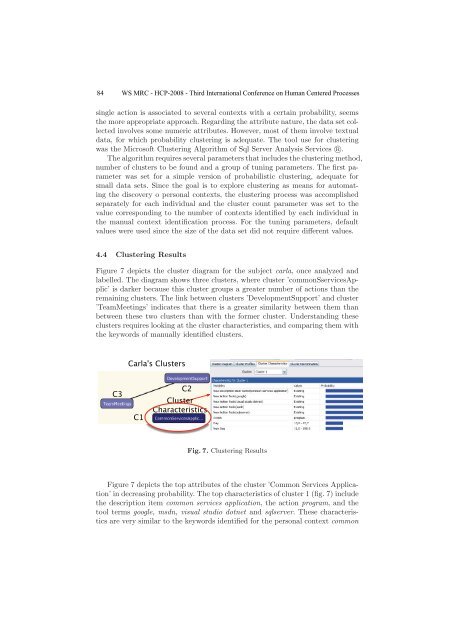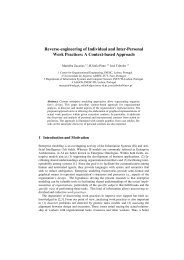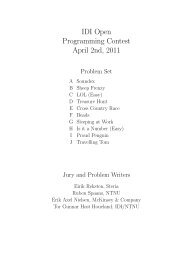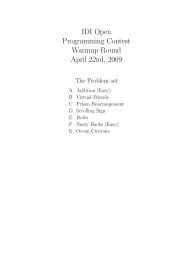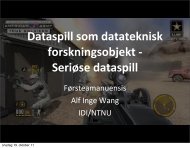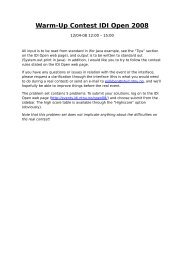Automatic discovery of personal action contexts - CiteSeerX
Automatic discovery of personal action contexts - CiteSeerX
Automatic discovery of personal action contexts - CiteSeerX
You also want an ePaper? Increase the reach of your titles
YUMPU automatically turns print PDFs into web optimized ePapers that Google loves.
84 WS MRC - HCP-2008 - Third International Conference on Human Centered Processessingle <strong>action</strong> is associated to several <strong>contexts</strong> with a certain probability, seemsthe more appropriate approach. Regarding the attribute nature, the data set collectedinvolves some numeric attributes. However, most <strong>of</strong> them involve textualdata, for which probability clustering is adequate. The tool use for clusteringwas the Micros<strong>of</strong>t Clustering Algorithm <strong>of</strong> Sql Server Analysis Services R○.The algorithm requires several parameters that includes the clustering method,number <strong>of</strong> clusters to be found and a group <strong>of</strong> tuning parameters. The first parameterwas set for a simple version <strong>of</strong> probabilistic clustering, adequate forsmall data sets. Since the goal is to explore clustering as means for automatingthe <strong>discovery</strong> o <strong>personal</strong> <strong>contexts</strong>, the clustering process was accomplishedseparately for each individual and the cluster count parameter was set to thevalue corresponding to the number <strong>of</strong> <strong>contexts</strong> identified by each individual inthe manual context identification process. For the tuning parameters, defaultvalues were used since the size <strong>of</strong> the data set did not require different values.4.4 Clustering ResultsFigure 7 depicts the cluster diagram for the subject carla, once analyzed andlabelled. The diagram shows three clusters, where cluster ’commonSservicesApplic’is darker because this cluster groups a greater number <strong>of</strong> <strong>action</strong>s than theremaining clusters. The link between clusters ’DevelopmentSupport’ and cluster’TeamMeetings’ indicates that there is a greater similarity between them thanbetween these two clusters than with the former cluster. Understanding theseclusters requires looking at the cluster characteristics, and comparing them withthe keywords <strong>of</strong> manually identified clusters.Carla's ClustersC3C1C2ClusterCharacteristicsFig. 7. Clustering ResultsFigure 7 depicts the top attributes <strong>of</strong> the cluster ’Common Services Application’in decreasing probability. The top characteristics <strong>of</strong> cluster 1 (fig. 7) includethe description item common services application, the <strong>action</strong> program, and thetool terms google, msdn, visual studio dotnet and sqlserver. These characteristicsare very similar to the keywords identified for the <strong>personal</strong> context common


